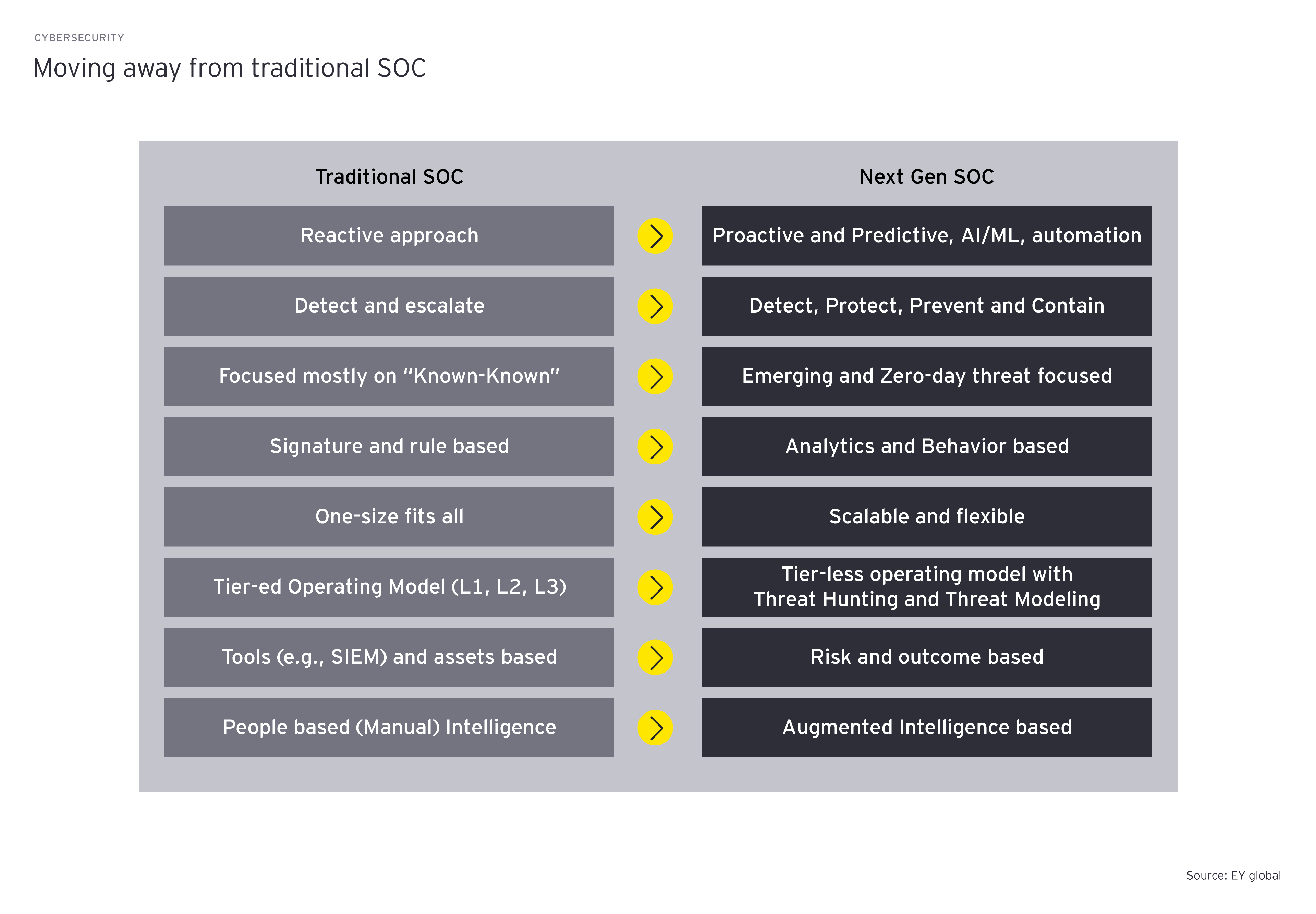Clearing the SOC dashboard to focus only on real threats is beneficial for the organization and team alike.
Automation in investigation and mitigation workflow is a key stone in maturing SOC capabilities. What we often see is that the talk of automation in a less mature SOC makes the SOC engineers and managers quite nervous. The fear of mistakes in automation causing business disruption or the impact on their reputation often blocks the advancements in this area. Automation in threat response however is not a standalone task but should be very carefully constructed in collaboration with other corporate functions.
With more time and resources available, the SOC team can also turn their attention to proactive threat hunting. All too often, this important endeavor exists essentially in name only. At the same time, team turnover falls dramatically when people have more rewarding work to do than mundane tasks in daily workloads, which is good for organizations not only in terms of costs saved in recruitment and onboarding, but also the knowledge and experience retained in this key function.
As can be seen, automation would improve the maturity level in various aspects across the domains people, process, technology and services.
Next Generation SOC
We believe the future of SOC is one that leverages the full potential of people, technology and processes, and considers all business drivers to deliver a suite of services that truly protect the organization. The next generation of SOC will be about using technological advances at scale to support seamless connections between these different touchpoints.
To continue meeting security needs, we believe next generation SOCs should also incorporate:
- Big data platforms and machine learning and advanced behavioral analytics, threat hunting, integrated incident response and SOC automation
- Network traffic analysis and application performance monitoring tools
- Endpoint detection and response, which helps detect and mitigate suspicious activity on hosts and user devices
User and entity behavior analytics, which uses machine learning to identify suspicious behavior patterns.

Summary
The SOC is a vital player in protecting your organization from a growing range of cyber threats. As technology advances and companies struggle to recruit qualified staff, a sophisticated, tech-enabled SOC will help you remain agile and robust in hunting and responding to threats. Key to this is reducing the noise of false positives, empowering the team to focus on strategic work and using tools and technology intelligently to realize the true potential of the SOC.



